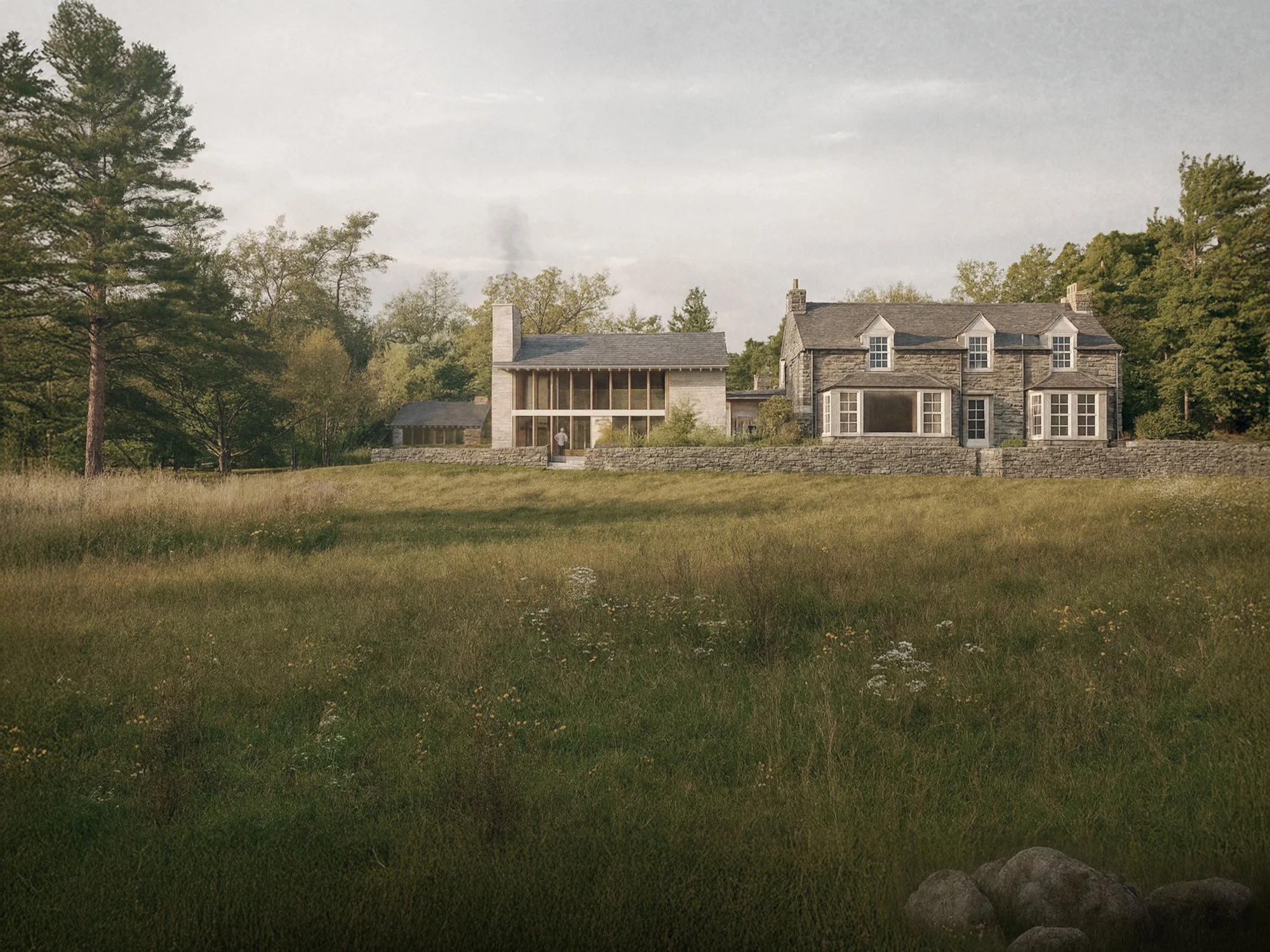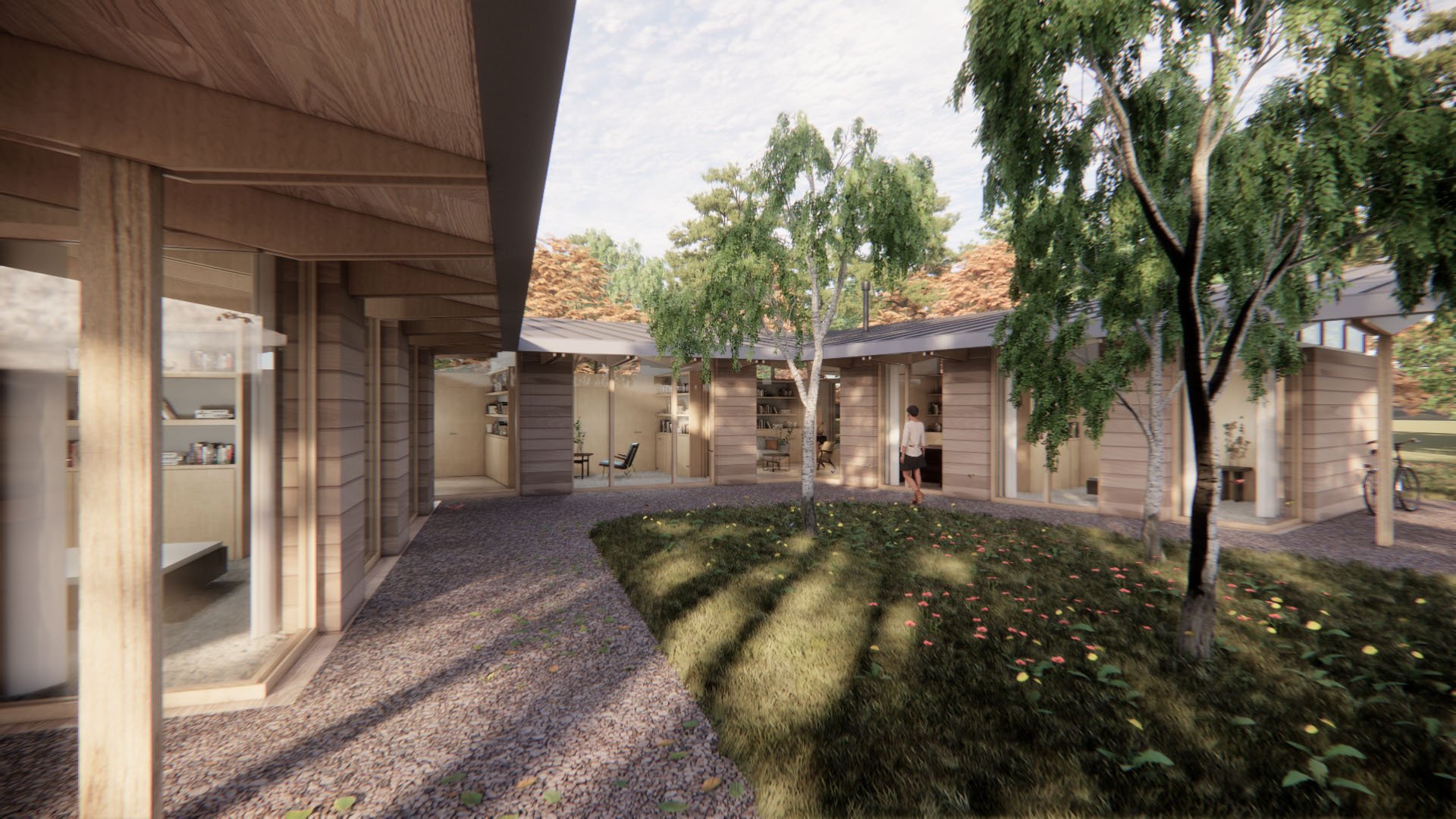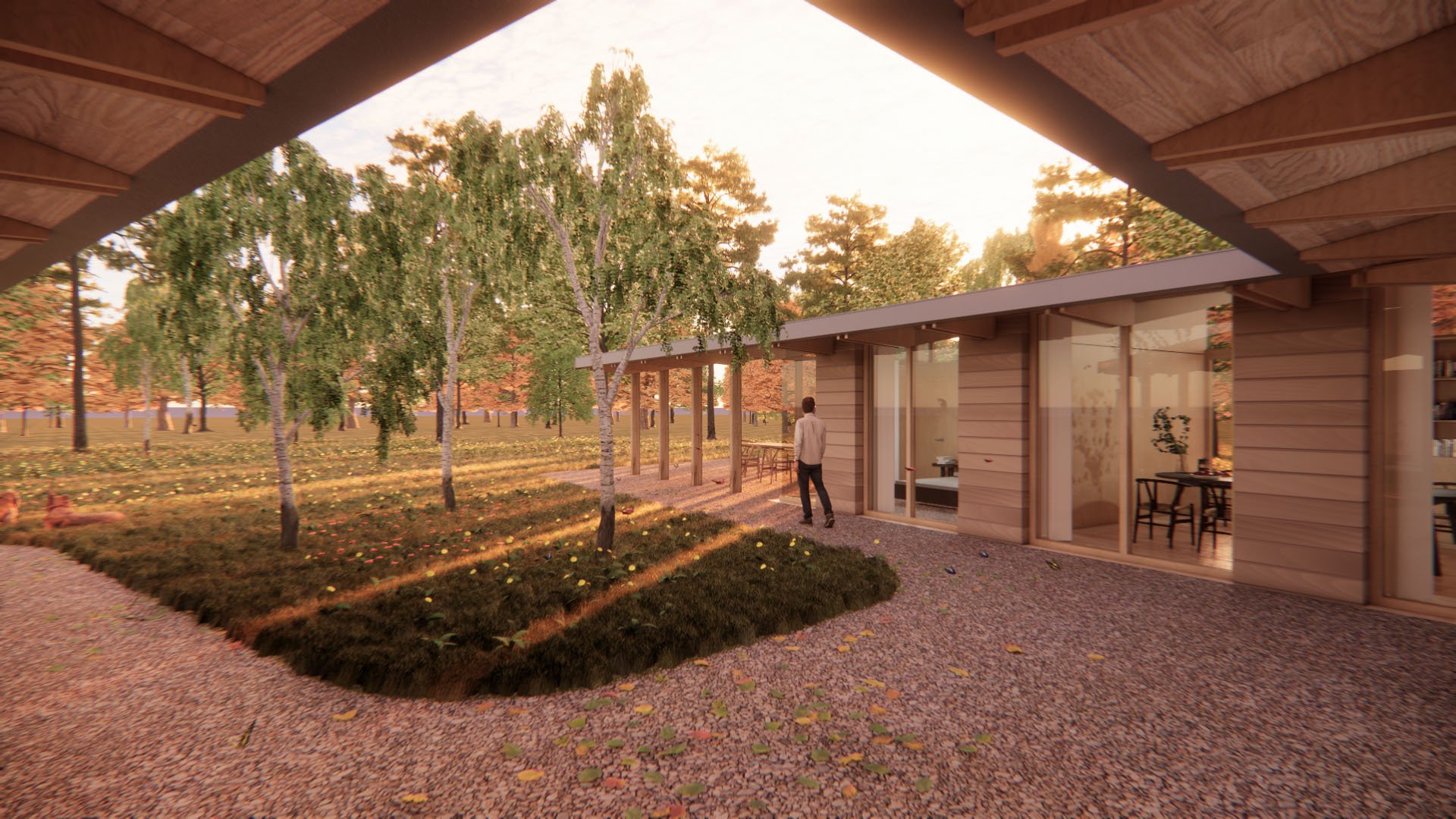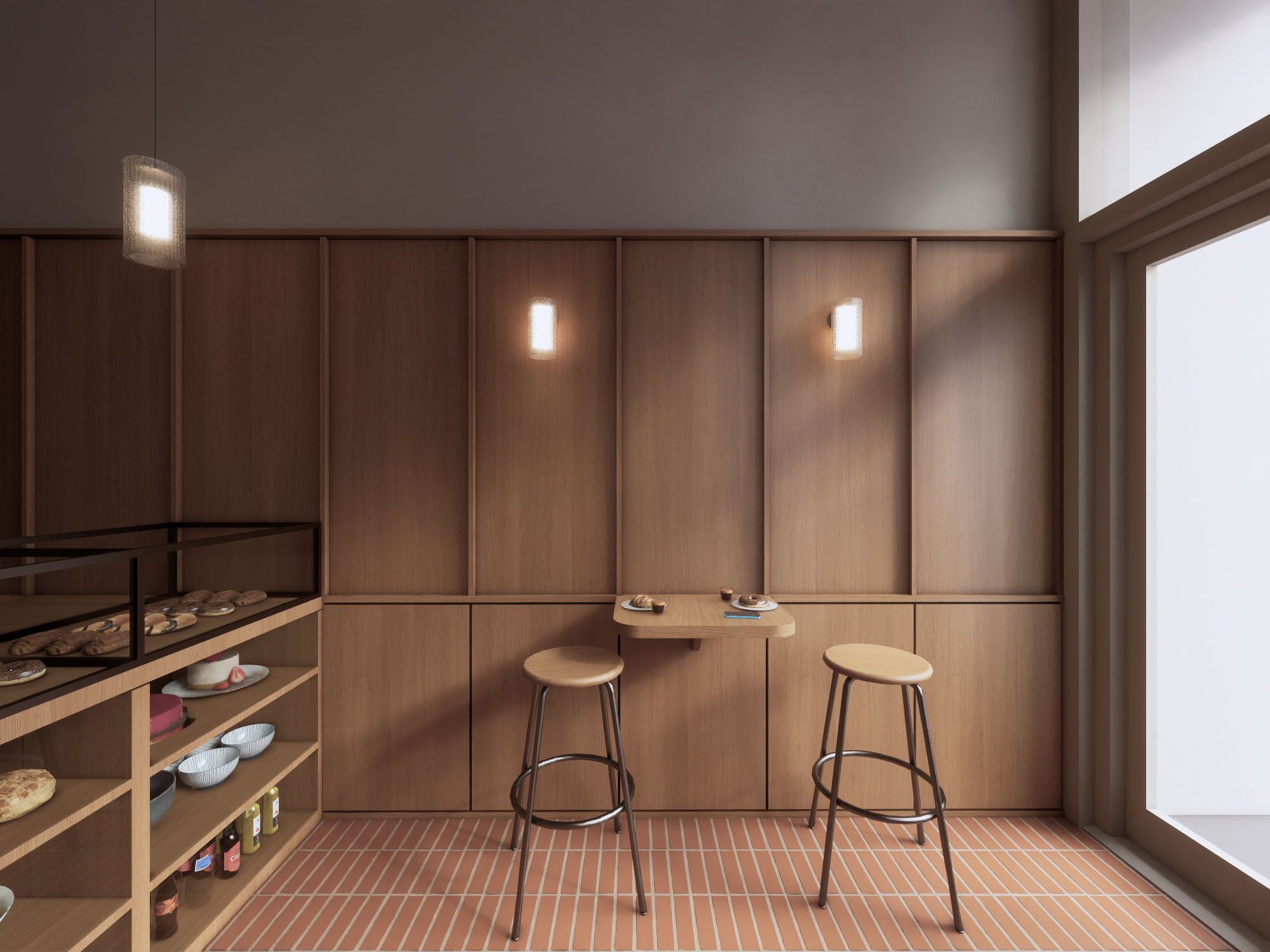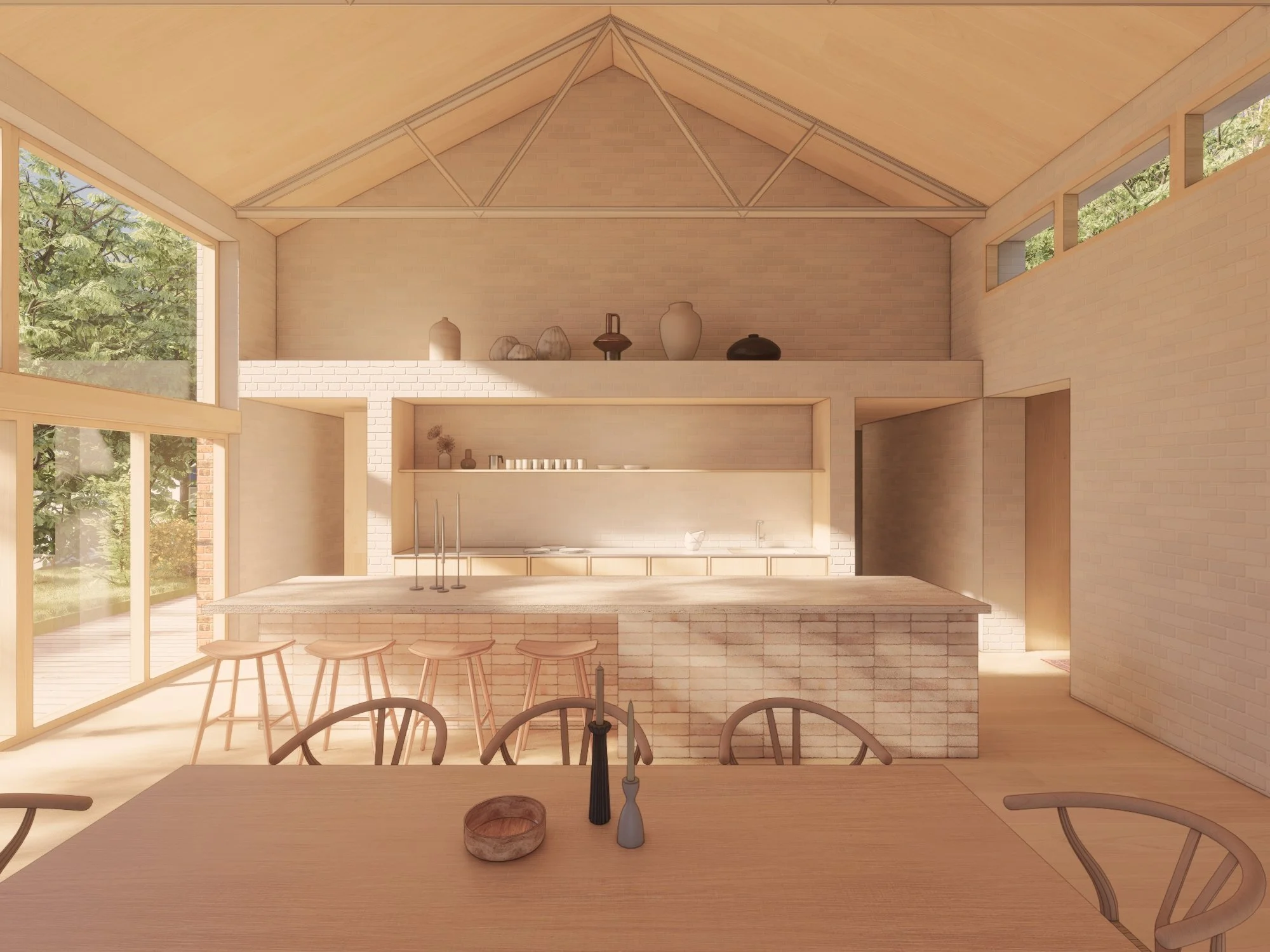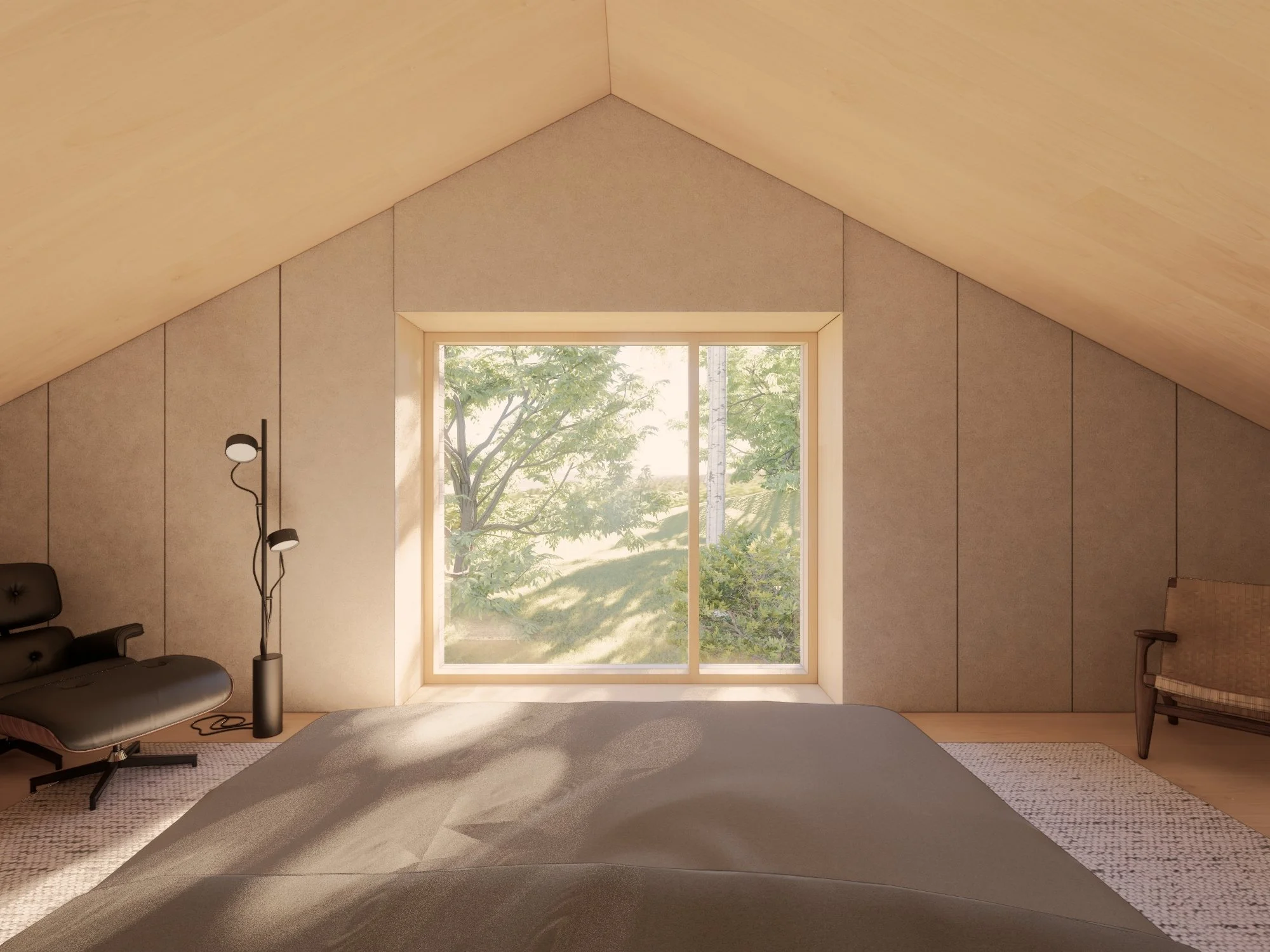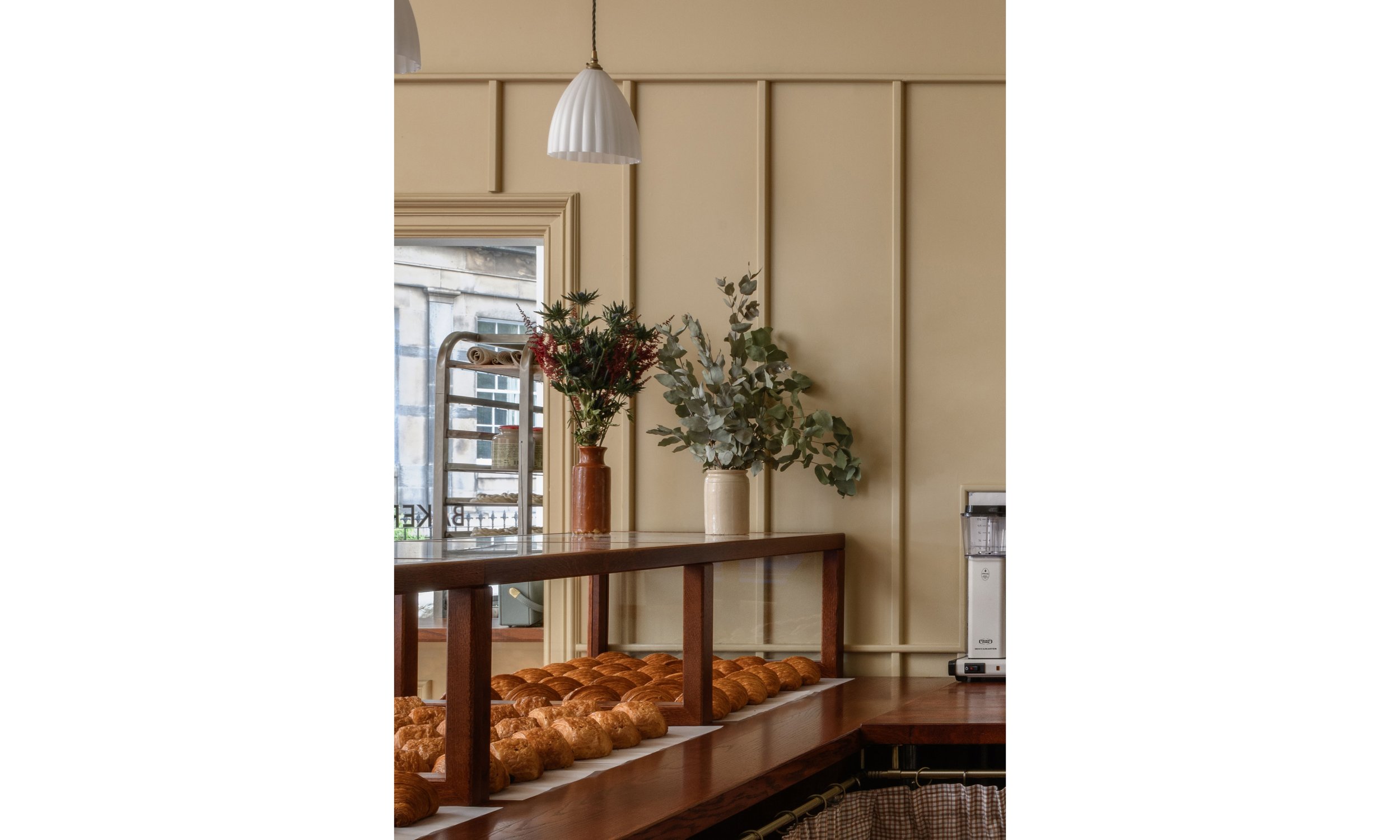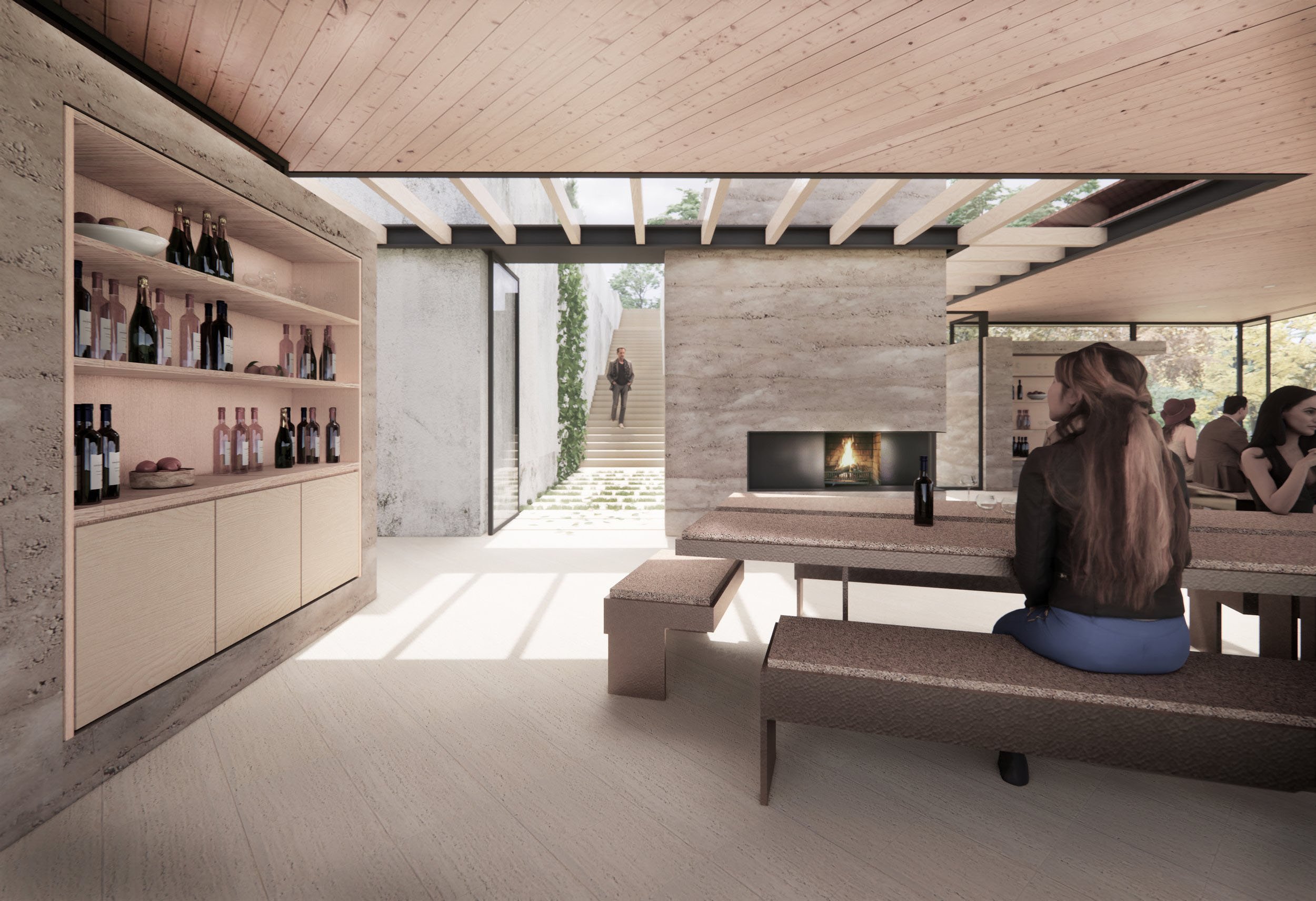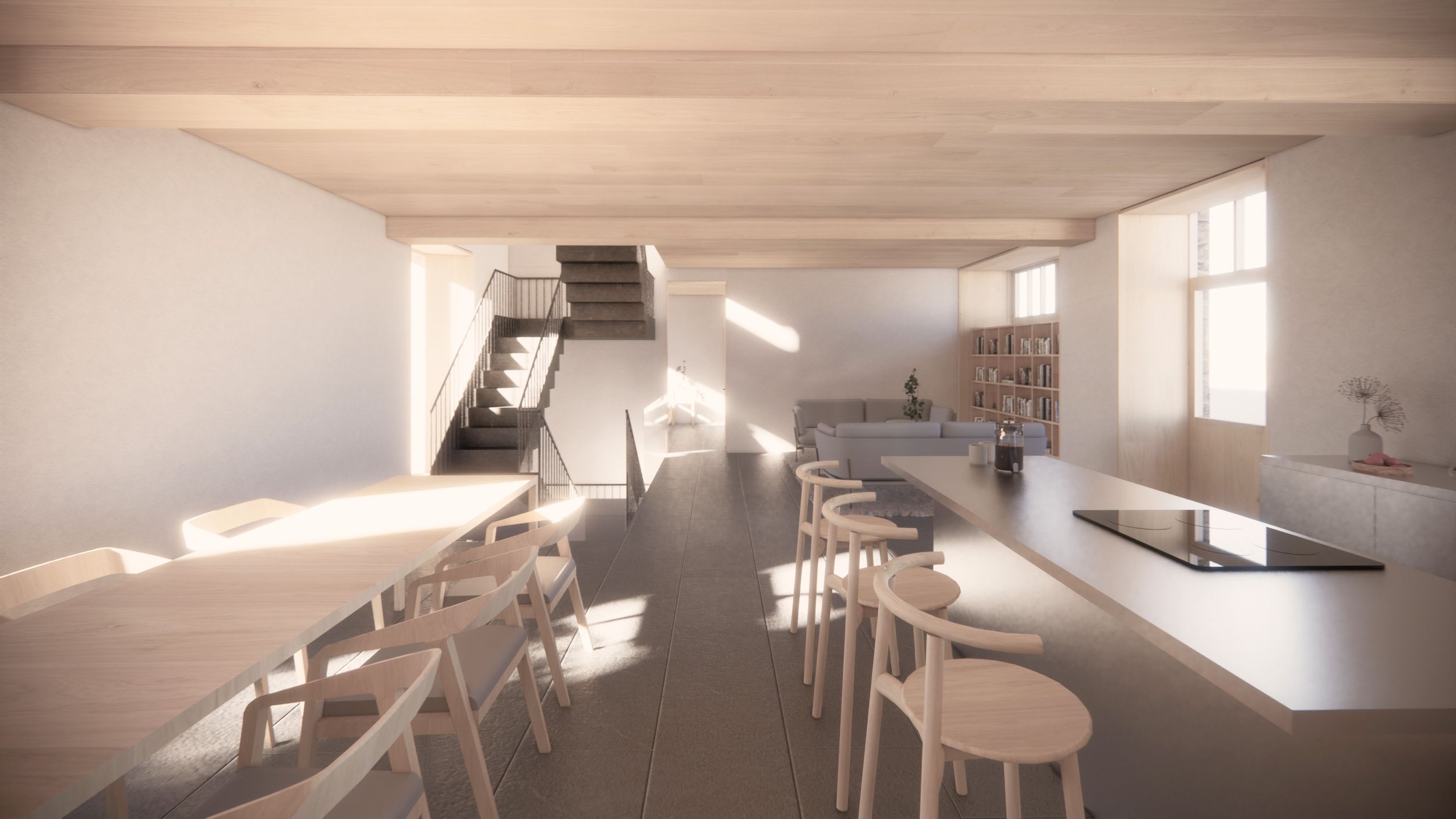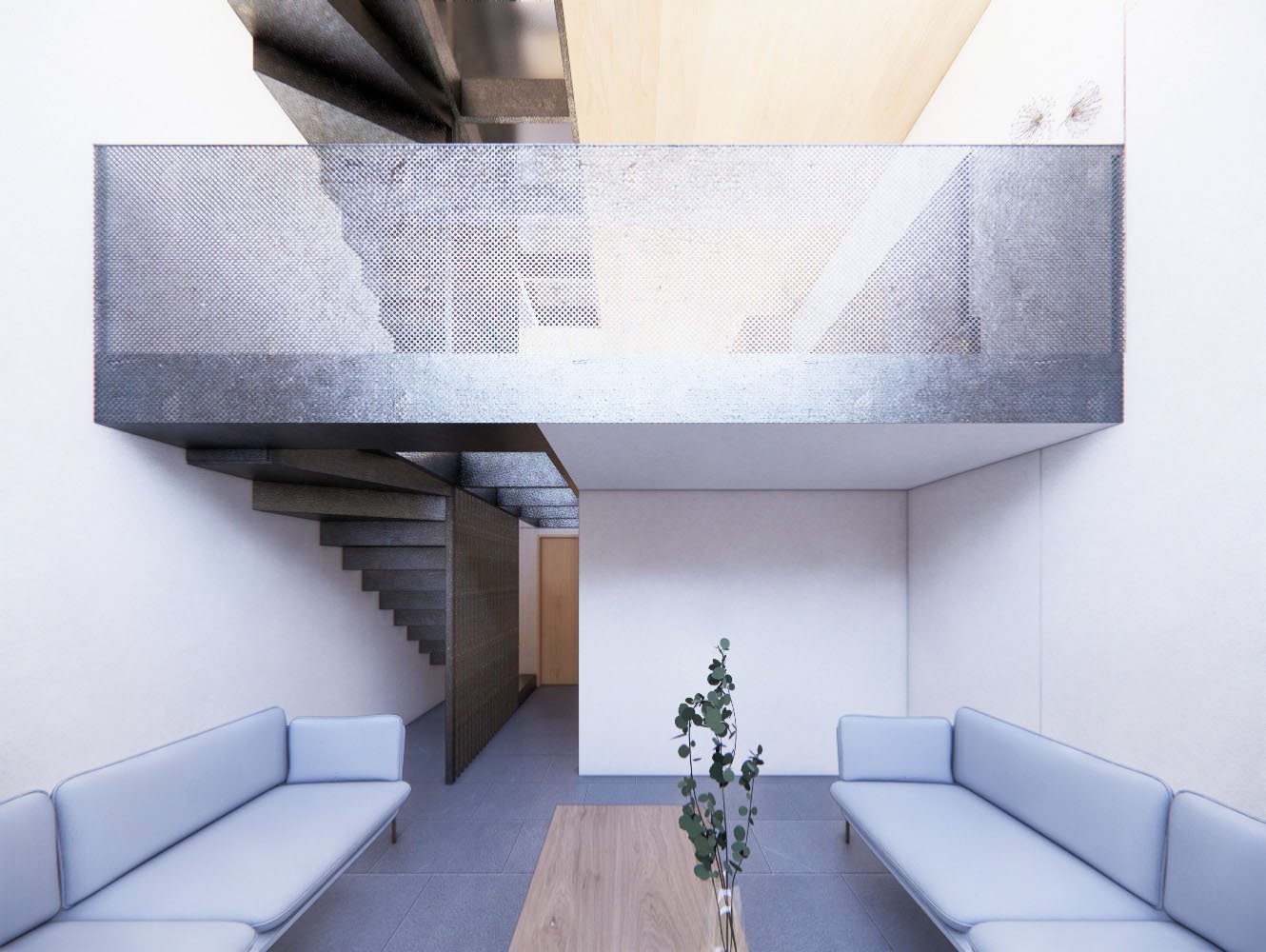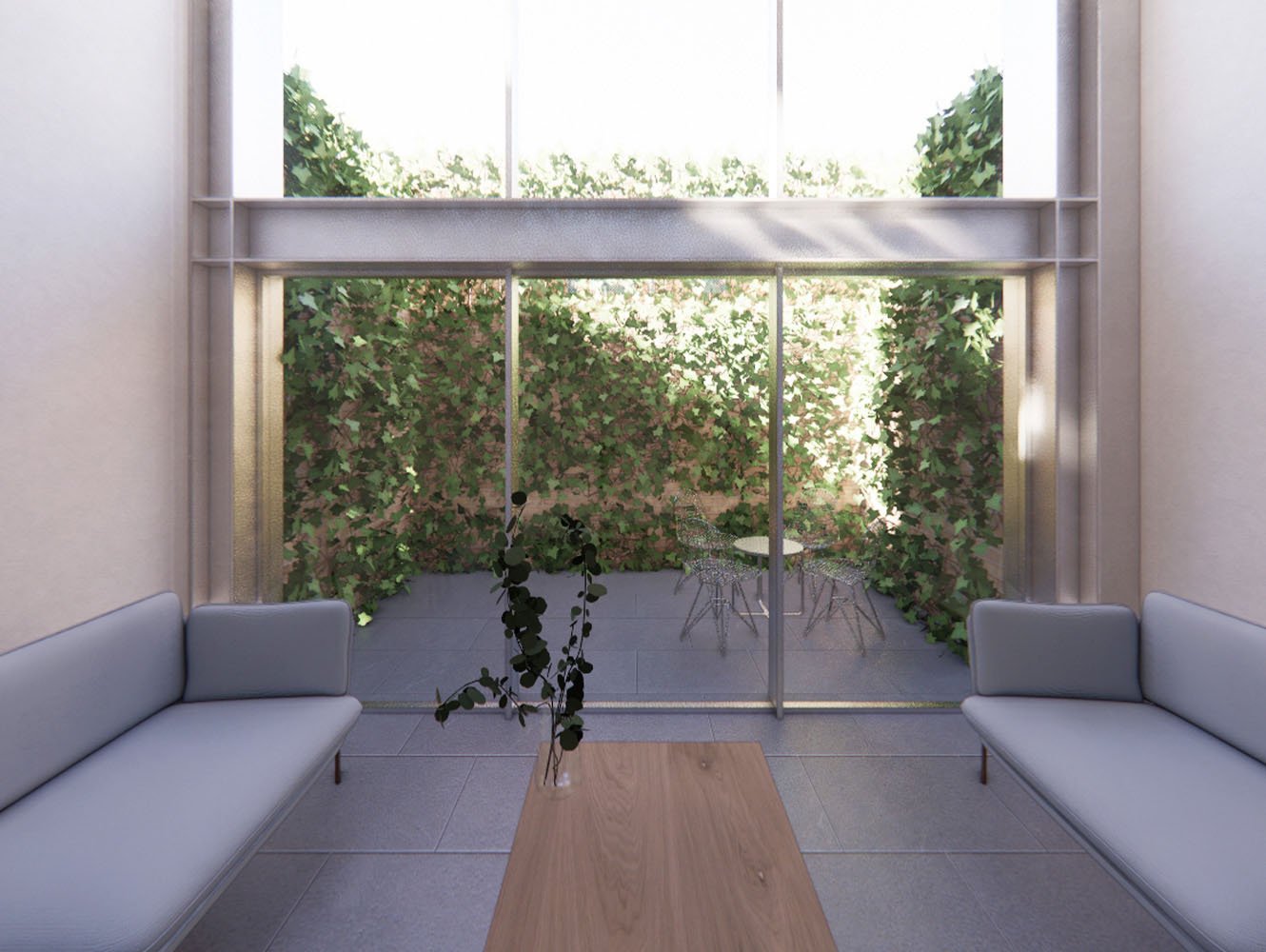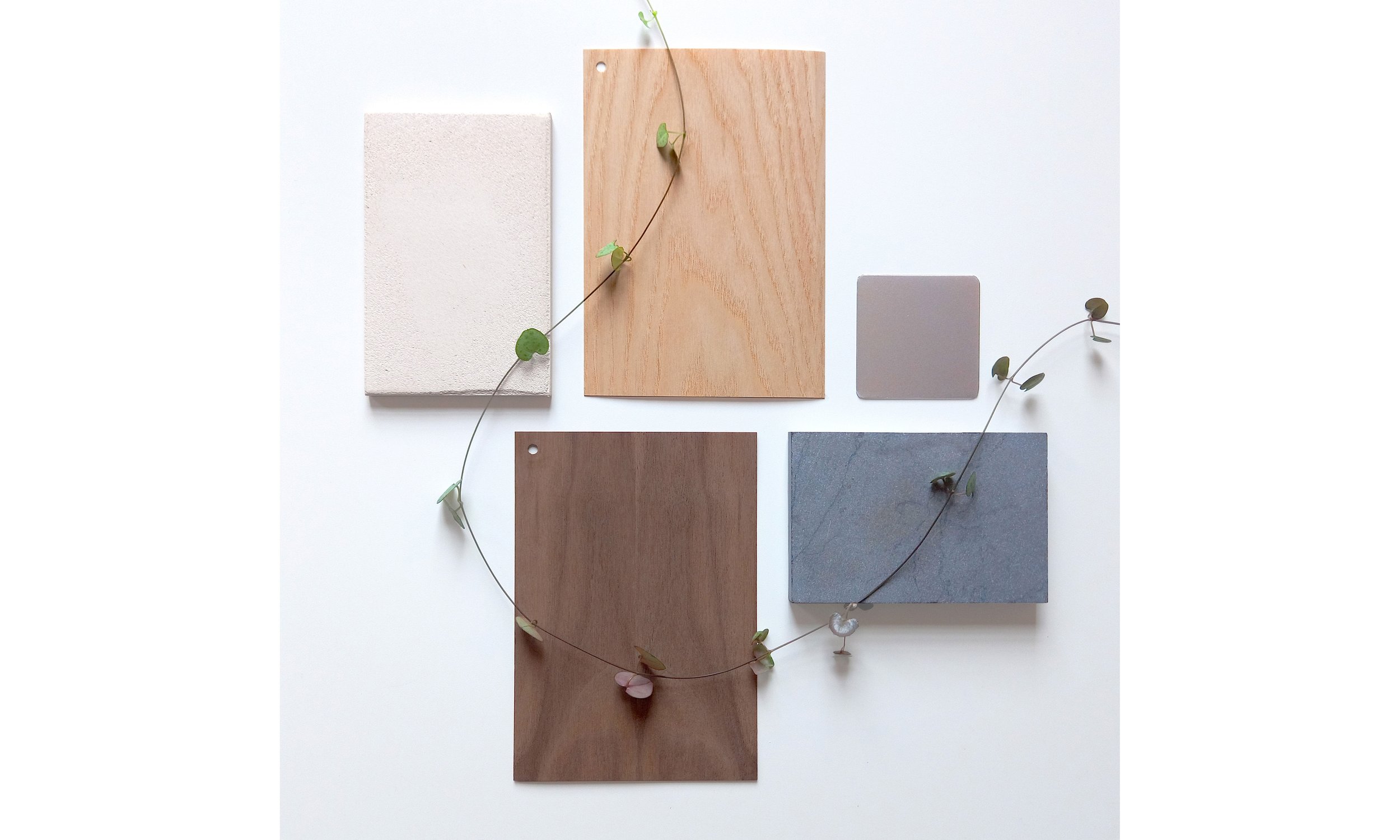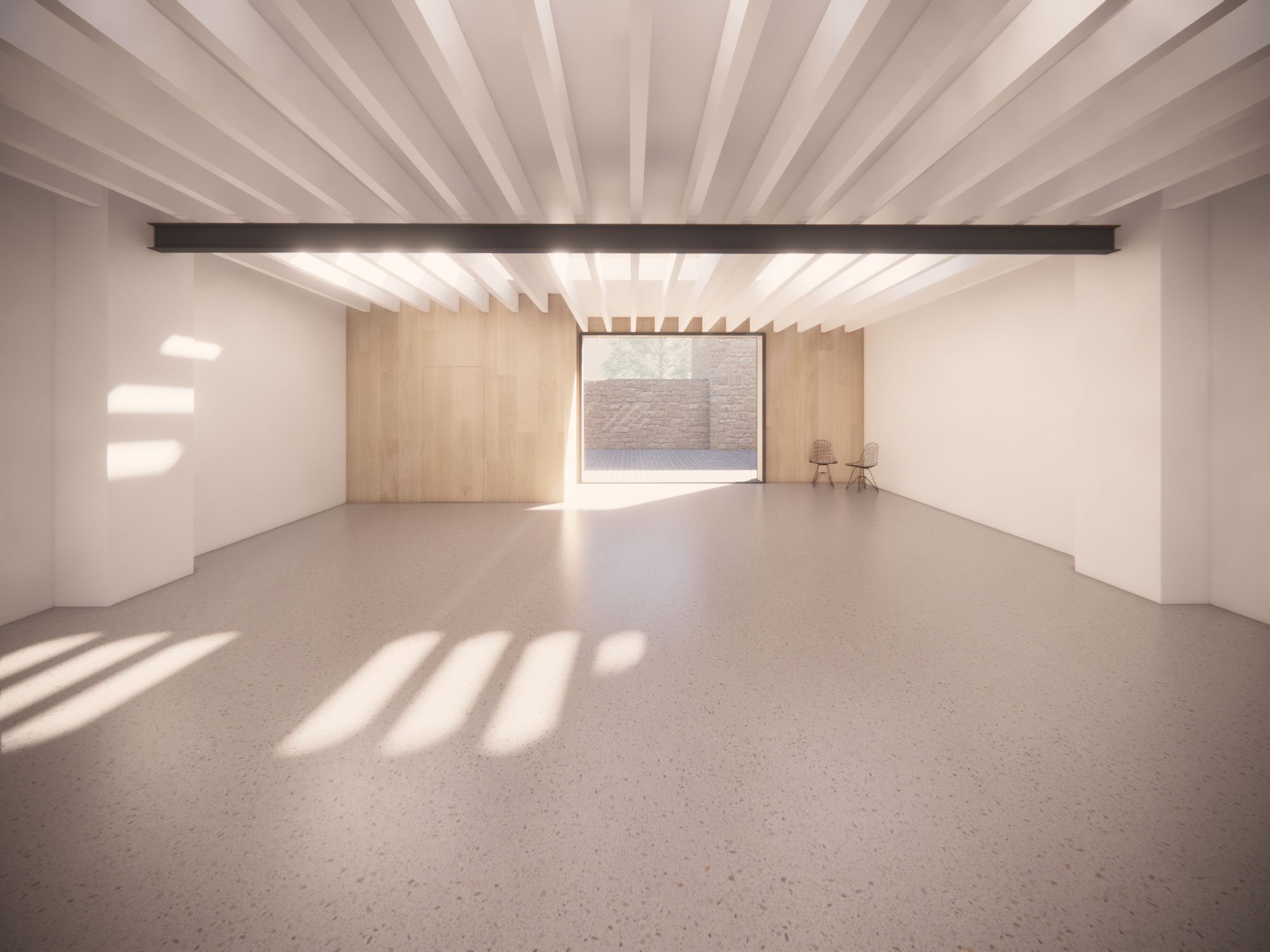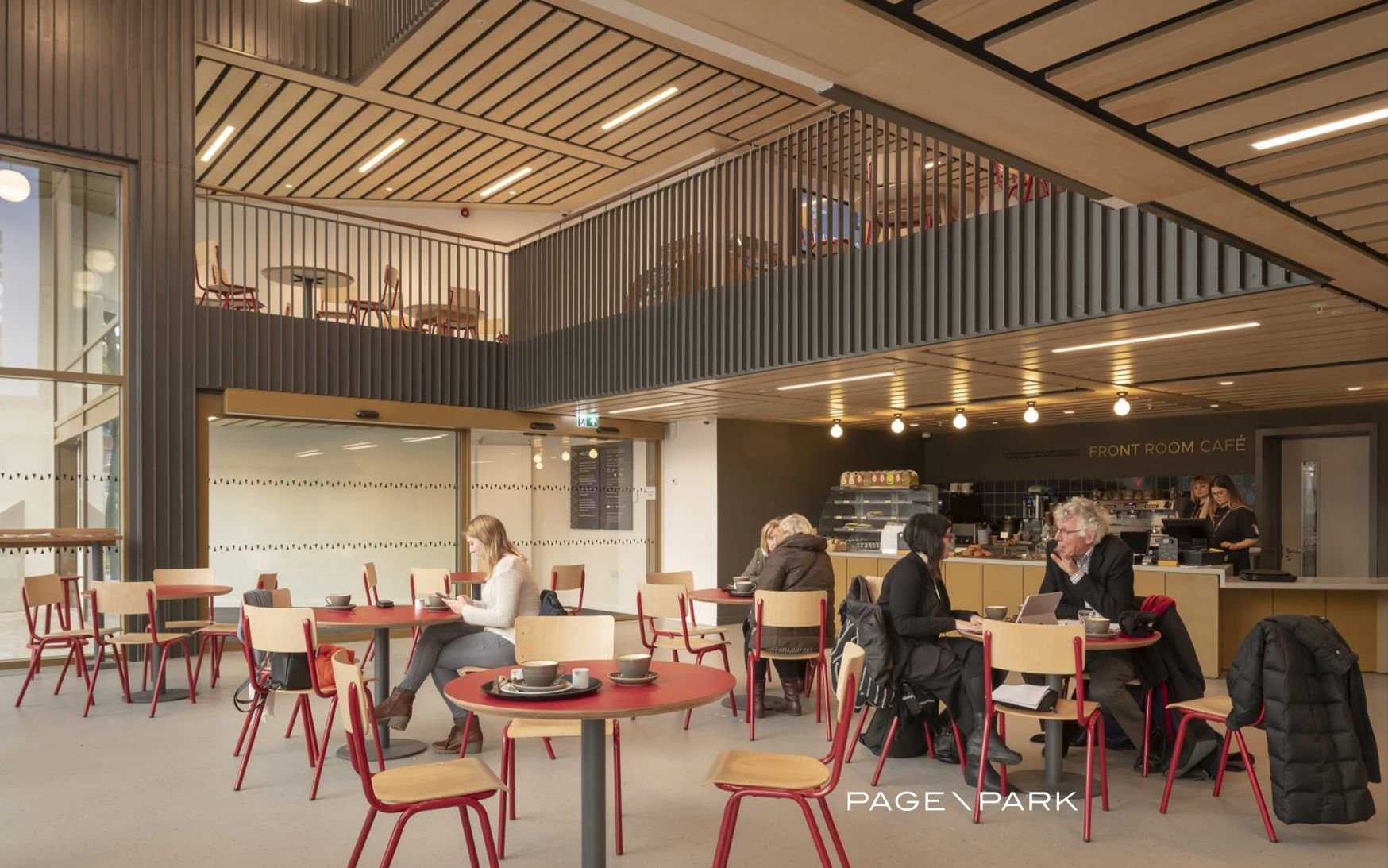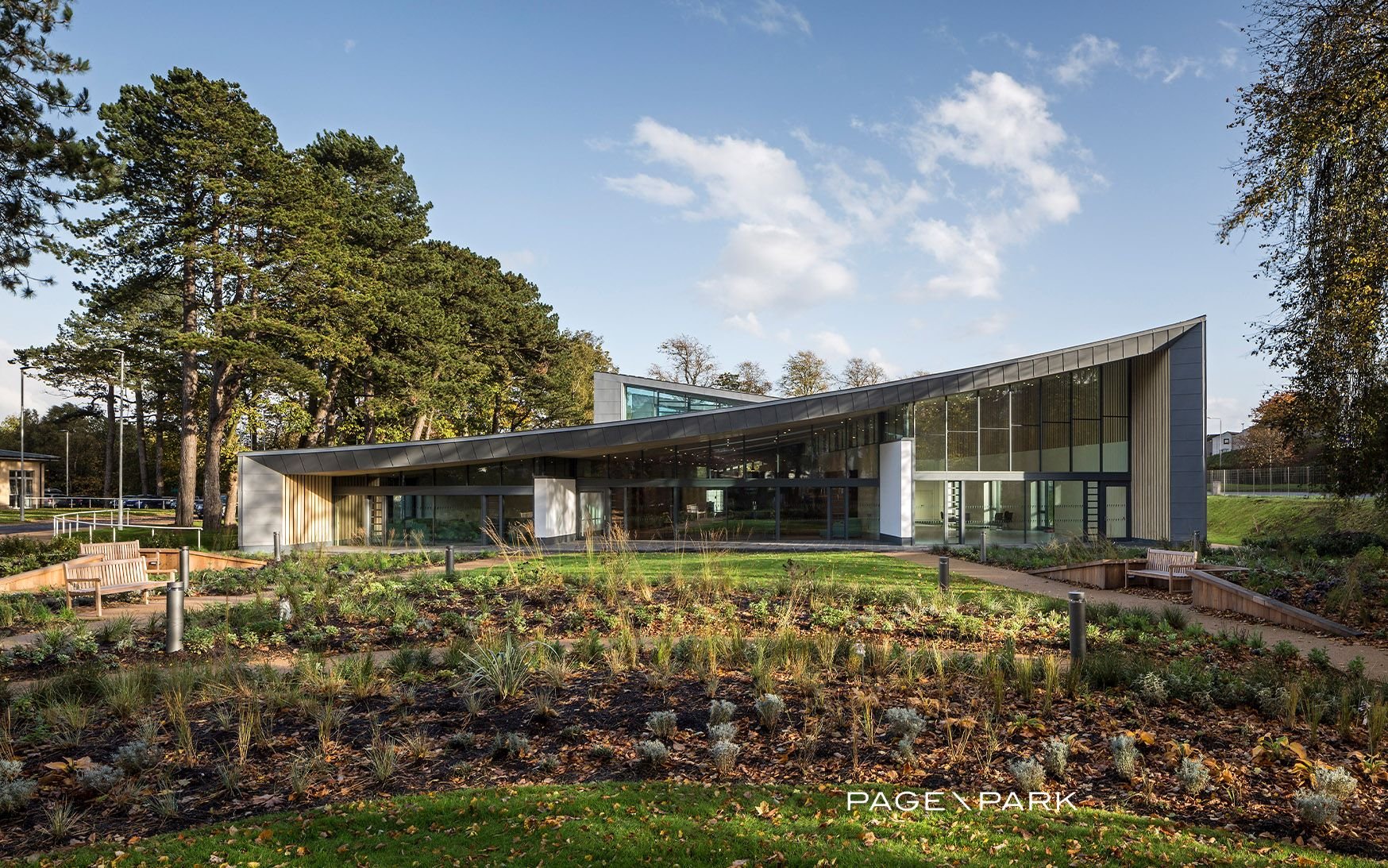We create buildings that are sustainable, enduring and contemporary. Our work balances beauty with utility, so that architecture lifts the spirit while supporting daily life.
We work across homes, workplaces, cultural venues, community buildings, education, hospitality and masterplanning. Whatever the scale, we begin by listening carefully, understanding how people will use the spaces, and shaping clear briefs together with our clients.
Sustainability is integral from the outset. We think about orientation, form, materials and energy strategy early, ensuring that decisions are robust and well informed. Often, the most sustainable choice is to re-use and adapt what already exists, and we embrace that opportunity whenever possible.
As a Certified B Corporation, we measure success by the positive impact of our work on people and planet as well as its architectural quality.
Based in Edinburgh, we work throughout Scotland, across the UK and internationally. From a single room to a complex masterplan, we bring the same commitment to clarity, craft and care.
Trossachs Estate
Balerno Barn Conversion
Ethos
We believe architecture should provide delight while working seamlessly. Good buildings are memorable, comfortable and practical, creating spaces that support everyday life without becoming obstacles to it.
Our focus is on people. Clients and building users shape the brief, and our role is to interpret their aspirations with care. We test ideas, explain choices clearly, and translate them into architecture that feels both natural and distinctive.
Context matters. Whether urban, rural or historic, each project is shaped by its setting. We value craft and detail: the touch of timber, the texture of stone, the play of light. These are what give a building depth and resonance.
We design for the long term. Our aim is to create buildings that can be maintained, adapted and enjoyed for generations. This means working with robust materials, simple assemblies and sustainable systems that are straightforward to care for over time.
Services
We provide a complete architectural service, from the first conversation through to completion on site. Our work covers new buildings, masterplans and interiors, each approached with the same care and attention to detail.
Architecture
We design both new buildings and the adaptation of existing ones. Each project is tailored to its users and its site, with beauty, function and sustainability as guiding principles.
Masterplanning
Masterplans shape how places grow over decades. We balance vision with deliverability, helping clients, landowners and local authorities to unlock potential with strategies that are ambitious but achievable.
Interiors
Interiors are where buildings are most directly experienced. We design tactile, durable environments for homes, cafés, restaurants and workplaces, selecting materials for their performance, character and longevity.
How we work
Alongside design, we coordinate consultants, manage planning and warrant submissions, and support procurement and delivery. Our role is to make the process clear, reliable and well-managed, giving clients confidence at every stage.
Cheviots Farmhouse
Cheviots Farmhouse
Approach
We approach every project with openness and collaboration, building trust through clear communication and professionalism. Every design grows from dialogue with clients, consultants, contractors and communities, with respect and care at the core of how we work.
Communication
We keep conversations straightforward and consistent. Virtual reality allows clients to step into a project before it is built, while models and drawings help explain ideas to planners, stakeholders and communities.
Collaboration
Architecture is collective. We work closely with engineers, cost consultants and specialists to produce coordinated designs. Three-dimensional modelling helps us share information clearly, reduce risk and ensure that details are resolved before construction begins.
Trust
Technical skill is only part of the process. We are open about cost, programme and constraints, responding quickly to issues as they arise. This balance of communication, collaboration and trust underpins both successful outcomes and long-term relationships.
Sustainability
Sustainability runs through every stage of our work. It shapes the first moves on site, guides material choices, and influences how buildings perform for decades to come. Our aim is to create architecture that is environmentally responsible, economical to operate and built to last.
Passive House
Director Martin Flett is a certified Passive House Designer. This rigorous standard reduces energy demand and improves comfort, delivering low-carbon buildings that are economical to run. We apply its principles to both new construction and the upgrading of existing buildings.
Low and zero carbon systems
We integrate photovoltaics, heat pumps, heat-recovery ventilation and, where appropriate, district heating. Each solution is considered in context, balancing performance with maintainability and client priorities.
Re-use and responsibility
The most sustainable building is often the one that already exists. We seek opportunities to re-use and adapt, extending the life of structures and materials, cutting carbon, avoiding waste and retaining cultural value. We also consider embodied carbon and durability, favouring natural materials and simple, repairable assemblies.
St Andrews House
Dean Village Mews
Conservation
Conservation is an essential part of sustainability, giving historic buildings new life while safeguarding their character and reducing carbon. We believe conserving and adapting what already exists is one of the most responsible forms of architecture.
Experience
We work with listed and locally listed buildings across Scotland and beyond, from modest cottages to significant public structures. Our projects range from careful fabric repairs to extensions that allow historic buildings to meet modern needs while preserving their character.
Expertise
Director Martin Flett is a Conservation Registrant on the RIBA Conservation Register. Alongside this in-house expertise, we collaborate with specialist consultants and craftspeople to ensure proposals are well informed and carefully made.
Balance
We protect what is significant, adapt where appropriate, and design interventions that are respectful, legible and reversible where possible. Conservation for us is not only about preservation, but about keeping buildings useful and loved, so their stories continue for future generations.
People
Martin Flett
Director
Martin Flett is the founding director of Ossian Architects. He works across a wide range of sectors, including arts and culture, education, sports, hospitality, residential, masterplanning, and workplace design, and at all stages of the process from appointment to completion.
He is a qualified Passive House Designer, with a keen interest in all aspects of sustainability, and a Conservation Registrant on the RIBA Conservation Register.
Martin founded Ossian Architects following many years of experience at respected practices in Scotland and beyond, including 7N Architects, Page\Park Architects, and Roz Barr Architects. When not at work, he enjoys getting out in the hills and countryside with his partner Neave and son.
Ewan Hooper
Associate
Ewan Hooper is an architect with experience in designing and overseeing a wide range of projects. He has a background in residential, commercial, and community architecture with a focus on tackling complex urban sites, turning constraints into creative opportunities. Collaboration is at the core of Ewan’s approach to architecture. He enjoys working closely with clients, consultants and contractors, valuing the input of diverse perspectives and ideas throughout the design & construction process.
Prior to joining Ossian Architects, Ewan worked at several award-winning practices including Sutherland Hussey Harris, Feilden Clegg Bradley Studios, Hoskins Architects and O’DonnellBrown. In his spare time Ewan enjoys getting outdoors especially to explore the Scottish roads and landscape by bike.
Grigor Brown
Associate
Grigor is an architect with experience across a wide range of project types, including cultural, leisure, workplace, residential and civic projects. As a native of Edinburgh, he is particularly passionate about projects that balance conservation with contemporary architecture, showcasing quality through natural materials, thoughtful details and craft.
Before joining Ossian Architects, Grigor worked at award-winning practices including Haworth Tompkins in London, Helen Lucas Architects in Edinburgh, and Barozzi Veiga in Barcelona. Grigor studied at the Mackintosh School of Architecture and participated in an exchange semester at the Accademia di Architettura di Mendrisio, Switzerland.
Outside of work, Grigor has a keen interest in travel and food, enjoying the discovery of new places, landscapes and cultures.
Charlotte Sörenson
Architect
Charlotte Sörenson is an architect with experience across a wide range of scales and sectors, including residential, commercial, workplace, hospitality and masterplanning. She has a keen interest in sustainability and working within historic buildings, aiming to sensitively re-purpose and preserve buildings stemming from an understanding of heritage, and promoting co-existence between the built and natural environment.
Outside of work, Charlotte engages in craft and design stretching from ceramics and furniture to interior design influenced by her Scandinavian and South American heritage and enjoys exploring natural landscapes and cities. Prior to joining Ossian Architects, Charlotte worked at HAUS Collective and Mott MacDonald.
Tim Khoo
Architect
Tim is an architect with a background in cultural, heritage, and residential architecture, working with both new and existing listed buildings. Passionate about modest structures that speak of vernacular traditions and a sense of craft, Tim brings a thoughtful and detail-oriented approach to his work.
Prior to joining Ossian Architects Tim gained valuable experience at award-winning practices including Hoskins Architects in Glasgow and MentahMatter in Malaysia. Growing up in Malaysia, he was exposed to a culturally rich and diverse environment which has enabled him to appreciate and draw upon a wide range of cultural influences.
Outside of his professional work, Tim enjoys cooking, photography and sketching - often utilising these as a tool to communicate and test out ideas in and outside of architecture.
Rachel Gray
Architect
Rachel is an architect with experience in high-quality residential and heritage projects, with an interest in both new and existing buildings. Her work is driven by a passion for architecture that balances conservation with contemporary interventions. She is especially focused on creating buildings that respond to their context, with a focus on sustainability, natural materials, and thoughtful detailing.
Before joining Ossian, Rachel gained valuable experience in practice, including at award-winning Hyve Architects in Aberdeenshire. Outside the studio, she enjoys travel, hillwalking, and can often be found trying out new bakes in the kitchen.
Projects
A new courtyard house for a young family near Alford, Aberdeenshire.
The form of the house is influenced by a typical form of steading in Aberdeenshire, which form a courtyard which is open at one end.
This provides a sense of enclosure to the house, and a sheltered courtyard, but maintains a strong connection between the courtyard and the landscape beyond, which is embraced by the house.
Every room is designed to have the option of opening out directly into the courtyard, allowing the client to open the whole house up to the garden during the summer months if desired.
The house is designed to sit gently on the land, with a lightweight timber structure and timber cladding giving the house a low embodied carbon footprint, and renewables including photovoltaics and an air source heat pump providing a low operating carbon footprint and energy bills.
Sectors: Residential, Interiors
Proposals for the conversion and refurbishment of a dilapidated steading in Angus.
Prepared for a commercial property developer, the proposal creates three studio apartments, as holiday accommodation, with respectful ‘light touch’ interventions within the shell of the existing building.
Natural materials are proposed throughout, with a new slate roof supported by timber scissor trusses, new rough-sawn timber flooring, clay plaster wall finishes, and existing rubble stone walls exposed internally where possible.
Behind the scenes, natural materials are also proposed, including sheep’s wool insulation to thermally upgrade the existing walls, and wood fibre insulation to the roof, with vapour permeable membranes so that the building is able to breathe.
Each studio apartment is provided with timber framed windows in new openings that are positioned to capture the scenic views of the area, and a sheltered outside dining area, from which to enjoy the rolling landscape beyond.
Sectors: Residential, Commercial
A new café in Leith taking inspiration from traditional Edinburgh café interiors.
As well as taking cues from traditional Edinburgh café interiors, the interior design also takes cues from the premises’ history as a tobacconist - historically these shops had warm rich timber interiors on the perimeter to display their wares.
Existing features of the shop, including cornices, are uncovered and restored and paired with more modern features, with simple timber wall panelling, steel framed glass display boxes and screens and fluted glass lamps.
To make the most of the space, built-in furniture and bench seating with hard wearing fabric cushions allow for a lot of seating space despite the small footprint of the café, in a warm and cosy setting.
Externally, the existing stonework is refurbished and redecorated with breathable paint, and historic lettering stating ‘Cigar Box’ is retained on the shopfront fascia to root the café in its place.
Sectors: Commercial, Interiors
Restoring a townhouse in Edinburgh’s New Town into a calm and refined workspace.
The project involves the comprehensive refurbishment of an existing townhouse office on Queen Street to create a series of hardworking, contemporary spaces for co-working.
A variety of spaces are created to suit both independent focused work and collaborative work, with a variety of meeting rooms designed to accommodate both formal and informal meetings.
The fabric of the building is upgraded to reduce the building’s operational energy use and improve the comfort of the spaces. The electrical and communication systems are also to be upgraded to contemporary workspace standards.
The proposed material palette is kept simple, with hardwearing materials and finishes chosen throughout to be respectful of and sympathetic to the existing Category A listed building.
Sectors: Commercial, Interiors, Conservation
A comprehensive refurbishment of an existing farmhouse in the Cheviot Hills, with new extension and garden building.
The extension captures views of the surrounding hills while also creating new outdoor seating areas below oversailing roofs and within a new sheltered courtyard to the rear of the house.
A new garden building is proposed, incorporating outside store and double garage, designed to be sympathetic to the surrounding agricultural buildings.
The existing Georgian house is to be comprehensively renovated, with existing period doors, shutters, architraves and skirtings refurbished and redecorated, and sympathetic alterations made to suit a modern way of living.
The entire project is designed with sustainability in mind, with a new air source heat pump, new insulation added to walls, floors and roofs, and natural materials used throughout.
The project is on-site, and we are really looking forward to seeing it move forward over the coming months.
Sectors: Residential, Conservation, Interiors
Located on a quiet, south-facing site adjacent to Lade Braes Walk, this new family home replaces a tired twentieth-century building overlooking the Kinness Burn. The sloping plot has been carefully reworked using cut-and-fill, allowing the house to settle naturally into the landscape while minimising excavation and maintaining privacy from the adjacent home.
Living spaces are arranged on the first floor, where a generous south-facing terrace projects into the garden, offering long elevated views to the hills beyond. Mature trees lining the neighbouring Viaduct Walk lend a softness to the aspect.
Below, robust cylindrical columns support the terrace and create shelter for arrival and outdoor living. Bedrooms open directly onto these spaces, partially set into the hillside to offer privacy and a strong connection to the garden. A garage and workshop sit neatly beneath the kitchen and dining area, integrated discreetly into the lower level of the building.
The house combines rubble stonework with timber cladding, drawing on local materials to create a calm, grounded presence within the setting. Carefully composed openings bring light deep into the plan and give the architecture a tactile, crafted quality. This is a contemporary home that balances durability with sensitivity, offering generous, light-filled spaces that engage with their surroundings.
Sectors: Residential, Interiors
A comprehensive programme of restoration and renewal for a rural estate near Aberfoyle in the Trossachs.
The project brings together the remodelling, refurbishment and extension of a number of existing buildings alongside the construction of new structures, all set within a dramatic Highland landscape of lochs, woodland and open hills. Buildings being restored include a Victorian hunting lodge, cruck-frame barn, stables, boat house and several ancillary outbuildings. Each is treated with respect for its character, using best-practice conservation methods in stonework, roofwork, plaster and timber.
The estate is being modernised to meet contemporary expectations of comfort and sustainability. Fossil fuel heating systems are replaced with renewable technologies, including heat pumps, photovoltaics and battery storage. Fabric upgrades improve energy performance through additional insulation, new insulated floor slabs and conservation double glazing.
Together, these measures ensure the estate continues to serve as a working, lived-in place. The architecture sits in balance with its landscape, combining heritage and sustainability to secure the estate’s long-term future.
Sectors: Residential, Conservation, Interiors
A careful conversion of an agricultural barn into a family home in Edinburgh, retaining the footprint, form and essence of the original building. With sustainability at its core, the project includes fabric upgrades with improved insulation to walls, floors and roof, while integrating natural materials throughout.
The proposal weaves together heritage and contemporary living, introducing new elements that reference the barn’s agrarian past while meeting modern standards of energy efficiency and comfort.
A low-impact, fabric-first approach underpins the scheme. The distinctive red brick walls and simple form of the barn are retained, while generous south-facing openings maximise natural light.
The ground floor contains a double-height kitchen-dining space and a cosy living area, both opening onto terraces with landscape views. Bedrooms occupy the existing lean-to footprint, while a west-facing master suite sits within the pitched roof space above.
Set within Edinburgh’s Green Belt, enhancements to the surrounding landscape to support biodiversity are also included. A rain garden and native Scottish planting will be introduced, creating a richer and more resilient environment.
Sectors: Residential, Interiors, Conservation
A new bakery and shop in Stockbridge, Edinburgh. Design led by Darcie Maher with support from Nicholas Taggart and Ossian Architects.
Situated on the ground floor of a listed tenement at the corner of Hamilton Place and Saxe Coburg Street, Lannan Bakery features a distinctive corner entrance and front of house with natural light and views out on three sides.
The project involved the conversion of a former beauty salon into a new bakery and shop, featuring a newly designed front of house and commercial kitchen in the adjoining rooms. The kitchen is connected to and visible from the front of house, creating an engaging experience for customers and those working there.
The interior design is purposefully subtle, with the space lined in decorated timber panelling and complemented by a simple palette of hard-wearing natural materials including clay quarry tiles, iroko timber and brass metalwork.
The existing building is Category B listed, with the period features retained inside and out, with these informing the design. Structurally, the sole alteration was to strengthen the floor to take the weight of the new oven and prover, and new wiring, lighting, plumbing, fire and security alarm systems were installed throughout.
Externally, the premises has been given a new identity with a purposefully simple colour palette, new gold gilt lettering in the windows, and a new projecting sign and awnings. The awnings provide solar protection to the south-facing windows, mitigating overheating, and also provide shelter for customers on rainy days.
Photography by ZAC and ZAC.
Sectors: Commercial, Interiors
Refurbishment and extension of a traditional Edwardian stone home in the Newhaven Conservation Area, with the addition of a new garden studio.
The main house is carefully reconfigured to suit modern family life. On the ground floor, small rooms are opened up to form a generous kitchen and dining space that connects directly to the garden. New rooflights and a pair of garden-facing doors bring daylight deep into the plan, while circulation is simplified to create a calm and functional layout. Upstairs, bathrooms are rationalised and services upgraded to improve comfort and efficiency.
Targeted fabric upgrades improve energy performance. Slimline double-glazed windows are installed in styles appropriate to the conservation area, while natural insulation, underfloor heating and a ground source heat pump reduce energy demand and support a low-carbon future. Essential repairs to roof, chimneys and rainwater goods ensure the building’s long-term integrity.
At the end of the garden, the former garage is transformed into an artist’s studio with an adjoining sauna. Conceived as a timber-clad pavilion with a hipped zinc roof and generous overhangs, it offers both a bright workspace and a secluded retreat. Rainwater is allowed to disperse directly from the eaves, creating a subtle seasonal water feature and reinforcing the sense of connection to the garden.
Sectors: Residential, Conservation, Interiors
Highly commended entry to an international competition for a new wine tasting room to the Quinta do Monte D’oiro winery in Freixial de Cima, Portugal. Collaboration with Studio Boyd.
Our proposal nestles the tasting room into the ground adjacent to the vines, to make a strong connection between the experience of wine tasting and the key ingredient, the grapes on the vine.
The materials of the wine tasting room are chosen for their connection to the earth, with walls constructed from rammed earth from the vineyard, limestone floors, oak cabinetry and finishes, and compressed cork seating and tabletop.
The tasting room is designed to be in harmony with the vineyard, respecting and enhancing the biodiversity of the terroir through the addition of a new sensory garden, fruit trees and water rills.
The sensory garden includes herbaceous and flowering species related to the wine character of Quinta do Monte D’oiro, with fruit trees chosen to complement the wine tasting sessions during harvest time.
Sectors: Hospitality, Commercial, Interiors
Proposals for the conversion of an existing mews property in Dean Village, Edinburgh into a family home.
The existing property, currently in commercial use, will be comprehensively refurbished and altered where necessary to make it comfortable for residential use.
Natural materials are proposed throughout, with limestone floors, timber wall and ceiling linings, exposed mild steel staircase, and breathable clay plasters throughout.
The building’s external fabric will be comprehensively upgraded to exceed modern thermal standards, using natural and breathable insulation materials such as sheep’s wool and wood fibre insulation boards.
Low carbon energy systems have been incorporated into the design to give the house a very low carbon footprint, including a ground source heat pump, mechanical ventilation heat recovery system and rainwater harvesting system.
Sectors: Residential, Interiors
Reinvigorating a rural estate in the hills above Loulé in the Algarve.
The existing estate includes several ruined houses, which are to be sympathetically refurbished and brought back to life.
An additional new house is to be created on a plateau below the existing dwellings, designed as a modern addition to the historic estate.
A new swimming pool is to be formed on a plateau below the new house, for use by all the houses on the estate.
All of the houses are designed to maximise views over the surrounding hills and valleys and out to the Atlantic Ocean.
Natural materials are used throughout, including clay tiles, clay plaster, oak timber and copper.
An existing series of outdoor spaces is refurbished and extended to provide a series of terraces which step down the hillside, providing amenity and connecting the houses.
New mechanical and electrical systems are proposed throughout, including well-source water, ground source cooling, photovoltaics and battery storage.
Sectors: Residential, Masterplanning, Interiors, Conservation
A new mews building in Murrayfield, within the Coltbridge and Wester Coates Conservation Area.
The new mews building is proposed within the rear garden of a townhouse, and will form new ancillary accommodation for use by the townhouse owners, including garaging and utility spaces at ground and habitable space above.
A simple material palette is proposed externally, including buff brick and a slate-grey zinc roof to match the tonality of the surrounding buildings, the traditional buildings of which are generally buff sandstone with grey slated roofs.
Internally, a restrained palette of hard-wearing natural materials is proposed including timber panelling, doors and flooring, limestone flooring in the utility areas and plaster wall and ceiling finishes.
Large pivoting timber louvres are proposed at first floor level to provide privacy to the habitable accommodation.
Sectors: Residential, Interiors
A new house in the hills above Loulé in the Algarve.
The house is designed to sit within a hollow in the landscape, bedding it down within its site. A large overhanging roof extends out beyond the house to provide shelter from the summer sun.
The house is built from local natural materials, including Portuguese limestone, clay tiles and clay plaster, with an overhanging soffit lined in oak. A copper roof shelters the house from intermittent rainfall.
Large metal framed windows capture views of the surrounding valleys and hills and out to the Atlantic Ocean.
A terrace of clay tiles steps down into the landscape, providing an easy flow from inside to outside. A swimming pool is formed on an additional terrace, stepping down the hillside.
New mechanical and electrical systems are proposed throughout, including a new ground source water supply, ground source cooling, photovoltaics and battery storage.
The project is part of a wider remodelling of an estate in Alfeição, including a number of houses and interconnecting outside spaces.
Sectors: Residential, Interiors
New interior for an existing café in Haymarket, Edinburgh.
A purposefully minimal material palette of hard wearing materials is proposed, including walnut counters, wall panelling and tables, bronze metalwork and stone floors.
A new bronze metal screen is employed to separate the working kitchen area from the customer area, with fluted glass to permit light and show activity whilst maintaining privacy.
The heritage features of the existing building are restored and incorporated into the proposals, including shopfront and cornices. A simple colour palette of warm greys and whites for the walls and ceilings help keep focus on the timber, bronze and stone elements.
Bronze metalwork provides highlights throughout the interior, including the new metal screen, internal signage, ironmongery and new lighting.
Sectors: Commercial, Interiors
Reimagining the lower ground floor and garden of a prominent townhouse in Stockbridge, Edinburgh.
Working with a landscape architect, the garden is extensively remodelled, with three new timber framed structures carefully integrated to provide sheltered areas to sit outside.
The interior is remodelled to provide a distinctive space at the base of the townhouse that stands in counterpoint to the traditional decorations throughout.
The energy performance of this floor of the townhouse is being extensively upgraded, with new insulated ground bearing slab, underfloor heating, double glazing to the stairwell, and double glazed windows and doors.
Natural materials are used throughout, including limestone floors, light oak linings to the interior, douglas fir structures to the exteriors, and clay plasters.
Sectors: Residential, Conservation, Interiors
Reinvigorating an existing house in the hills above Loulé in the Algarve.
The existing house is sympathetically remodelled, with a new living and dining space created at first floor level, looking over the surrounding hills and valleys and out to the Atlantic Ocean. An existing terrace is refurbished and extended to provide an outside dining space, with clay tiles running continuously from inside to outside.
The house is refurbished with local natural materials, including clay tiles, clay plaster and new oak rafters and wall panelling. A new perforated corten brise soleil is designed to protect the house from unwanted solar gain in the summer months.
New mechanical and electrical systems are proposed throughout, including well-source water, ground source cooling, photovoltaics and battery storage.
The house is part of a wider project on an existing rural estate which includes the refurbishment of a number of houses and outdoor spaces, and the addition of a new house and swimming pool.
Sectors: Residential, Conservation, Interiors
A concept design prepared in response to an open competition organised by Maggies, designed to be full of light, with views to every room, to the sky and the landscape beyond.
The design is arranged around a social space in the centre, with seating around a fireplace and a dining table, off which the rooms radiate.
Thick walls help provide a sense of safety and stability, and contain all of the utilitarian and storage spaces in the building, including cloaks cupboard, WC, storage, folding partitions, pantry, garden kitchen and chair store.
A timber vaulted roof brings warmth and height to the spaces, and each room is illuminated by rooflights and provided with a view and access to gardens, including an entrance garden, sensory garden and kitchen garden.
Sectors: Healthcare, Day Centre
Breathing life back into a dilapidated townhouse in west London.
The project involves the comprehensive refurbishment and extension of an existing townhouse in Fulham to create a new low-energy home with natural light and materials as its centre.
A new double height living space is formed at the rear of the house, opening out into a sunken courtyard garden formed by extending the basement storey out into the garden.
A new steel structure and stair is formed within the building, incorporating translucent glass floor panels which permit natural light from the skylight above to travel deep into the middle of the house.
New sustainable heating and energy systems are proposed, including an air source heat pump, mechanical ventilation heat recovery, and rainwater harvesting, and natural materials such as hardwood timber, clay plaster and limestone are used throughout.
Sectors: Residential, Interiors
Reinvigorating an existing house in the hills above Loulé in the Algarve.
The existing house is sympathetically remodelled, with a new open plan living and dining space providing the social focus to the house. New wall panelling forms a datum around the room, with open display cabinety in the kitchen and living space.
The house is refurbished with local natural materials, including Portuguese limestone, clay tiles, clay plaster and new oak framed windows, rafters and wall panelling.
An existing outdoor space is refurbished and extended to provide a link in a series of terraces which step down the hillside.
New mechanical and electrical systems are proposed throughout, including well-source water, ground source cooling, photovoltaics and battery storage.
The house is part of a wider project on an existing rural estate which includes the refurbishment of a number of houses and outdoor spaces, and the addition of a new house and swimming pool.
Sectors: Residential, Conservation, Interiors
Reinvigorating an arts and crafts villa in Glasgow.
The project involves the extensive remodelling and refurbishment of a 1980s arts and crafts villa in the Bearsden Conservation Area, to improve quality of space, layout, flow and materiality throughout.
The house is being significantly enlarged, with the existing double garage being converted into a master bedroom suite, and new garage extension sympathetically added to the side of the house.
The building’s energy performance is being comprehensively upgraded, with new high-performance double glazed windows, doors and rooflights, and additional insulation added at floor and roof level, with the replacement of the existing heating system with new high efficiency underfloor heating systems.
A simple palette of natural materials is proposed, including douglas fir flooring and a new oak staircase, cabinetry and kitchen.
The house has a number of sculptural pieces by the acclaimed Scottish artist Ian Hamilton Finlay, both on the building and in the grounds, which are being preserved and celebrated as part of the project.
Sectors: Residential, Conservation, Interiors
The holistic upgrade, reconfiguration and extension of an existing villa in Liberton, returning the building to its fine Victorian character and to provide a modern kitchen and dining space that embraces the south-facing garden.
The building was used as a nursery for many years, with layers of additions, so much of the work to the existing building is stripping back these layers to reveal the fine Victorian building underneath, including connecting in an attached Victorian stable.
A highly insulated timber lined dining room is formed at the rear of the property, with large single pane rooflight and stone floor, to provide a warm and contemporary counterpoint to the world of Victorian painted finishes inside the existing building.
The building is being comprehensively thermally upgraded, with new slimline double glazing to existing sash and case windows, thermal insulation added to the roof and ground floor, and triple glazed windows and rooflight to the new extension.
Sectors: Residential, Conservation, Interiors
The comprehensive refurbishment of an existing commercial premises in Leith, most recently used as a vehicle repair workshop, to form a light-filled, robust, thermally efficient space suitable for a wide range of uses.
The most public change to the building is the new façade, which has a simple palette of metal cladding, with a large weathering steel sliding door, to provide a robust façade to an active lane of car and motorcycle repair workshops. Combined with the new roof, the façade and linings essentially provides the building with a new insulated jacket.
Internally, the material palette is kept simple, with a hardwearing terrazzo floor suitable for taking vehicles across, timber wall linings that conceal a kitchenette and WC, compressed wood fibre panels lining the walls, and the existing roof joists retained and painted white, with new roof lights above to bring light deep into the space.
Sectors: Commercial, Refurbishment, Industrial
Opening up an apartment for a young family by the sea.
Our proposals look to re-organise the client’s apartment to make the most of views over Portobello promenade and beach, so that from the moment you open the front door you feel connected with the seaside.
An existing warren of rooms in the centre of the plan are removed, along with the main entrance door to the apartment, and bedrooms and bathrooms relocated to make the most of the ‘light’ space that the client have.
A new piece of joinery is proposed along the length of the apartment, varying in use as it passes through separate rooms and spaces. At the entrance to the property it acts as a cloaks cupboard, then becomes a writing desk as it passes through the hallway, after which it becomes the kitchen, and eventually becoming the living room cabinet.
A material palette of blond timber cabinetry and flooring are utilised to help reflect light deep into the floor plan, and existing masonry walls exposed to keep the finishes as simple, hard-wearing and natural as possible.
Sectors: Residential, Interiors
Experience
Leeds Playhouse (Page\Park Architects)
The significant refurbishment and extension of the existing Leeds Playhouse to create a new public face for the theatre, improve access throughout the building, form a new performance space and improve the hospitality and catering offer.
A significant extension and new frontage has been built to help the theatre turn around to face the city centre, with a facade of coloured ceramics which reflect the creativity and diversity of activity within the building and organisation.
Access has been improved throughout, and the building better connected with the surrounding streetscape. Access has been improved to the main theatre space through the introduction of new entrances at mid-tier level, allowing better wheelchair viewing positions and an improved visitor journey.
An as-found new studio theatre space has been created in an existing rocky underground vault. This space provides a new space for education and young artists programmes and for smaller and more experimental programming.
Martin Flett was one of the project architects for this award winning project from 2016-2018.
Images c. Page\Park Architects. Photography: Jim Stephenson.
Sectors: Arts and Culture, Interiors
Hawkhead Centre (Page\Park Architects)
A new activity and support centre for the charity Sight Scotland Veterans, who provide free support to ex-service men and women who have lost their sight during or after military service.
The centre provides a wide range of facilities to aid the charity in their work, including a sports hall, gymnasium, art room, wood workshop and a large dining area which forms the social hub and heart of the building.
A significant part of the centre is the connection between the inside of the building and the new sensory garden to which it opens out, complete with planting areas, pergola, potting shed and greenhouse, encircled by existing mature oak, larch, pine and maple trees.
Every key room in the building has a visual connection to this sweeping roof and to the central gathering area, engendering a feeling of community and connection to a wider whole.
Martin Flett was one of the project architects for this award winning project from 2015-2018.
Images c. Page\Park Architects. Photography: Keith Hunter.
Sectors: Healthcare, Day Centre
Fountainbridge (7N Architects)
The major, mixed-use redevelopment of the former McEwans Brewery site in Fountainbridge, including 430+ new homes of social, affordable and private tenures.
~113 new homes for social rent are provided at the corner of Dundee Street and Viewforth, in a mixture of apartments and colony-style houses organised around a shared courtyard garden.
~64 new homes for mid-market rent are provided adjacent to the new home of Edinburgh Printmakers, Castlemill Works, in a mixture of six-storey apartment building and low-rise apartment buildings to the rear. To the south, a new community garden is provided, including growing beds and fruit trees, for use by the whole community.
~259 new homes for private sale or rent are provided to the south, facing on to the canalside, with bars, restaurants and cafes at ground floor level spilling out onto the towpath.
Martin Flett was one of the project architects for this award winning scheme from 2018-2021.
Images c. 7N Architects.
Sectors: Residential, Masterplanning
School Sports Pavilion (7N Architects)
A new school sports pavilion for an independent school in central Scotland, won in invited competition.
The pavilion is set into an existing embankment, between hockey and rugby pitches, and split over two levels, with a lower level of changing rooms, classrooms and ancillary accommodation sunk into the embankment, and an upper level for spectating and events set above.
A folded timber roof is set above the upper level, giving the spaces below character and making reference to the pitched roofscape of the school’s existing buildings and campus.
On the upper level a multi-function events space is provided, which can be used all year round for dances, dinners, functions, weddings and prize givings as the school requires.
Martin Flett was one of the project architects for this competition winning scheme in 2019.
Images c. 7N Architects.
Sectors: Education, Sports
Salamander Place (7N Architects)
A significant new residential building as part of the Ropeworks development in Leith, providing 199no. affordable homes for mid-market rent by Link Housing Association.
At the centre of the project a shared courtyard garden is formed at first floor level, with common entrances and apartments opening out onto it, under which all of the dedicated cycle and car parking is concealed at ground floor level.
Active frontages are created to all four sides of the city block, with common entrances, front doors to ground-floor homes, landscaped front gardens, and two shop units provided along Salamander Place.
Buff and terracotta coloured bricks on different elevations of the block help to visually link it to the buff and red sandstone tenements of the area, and projecting brick coursing is used at ground floor level to help animate and provide character to the streetscape.
Martin Flett was the project architect for this residential development from 2021-2022.
Images c. 7N Architects.
Sectors: Residential, Commercial
Contact
80 George Street
Edinburgh
EH2 3BU
0131 210 0185
studio@ossianarchitects.com







